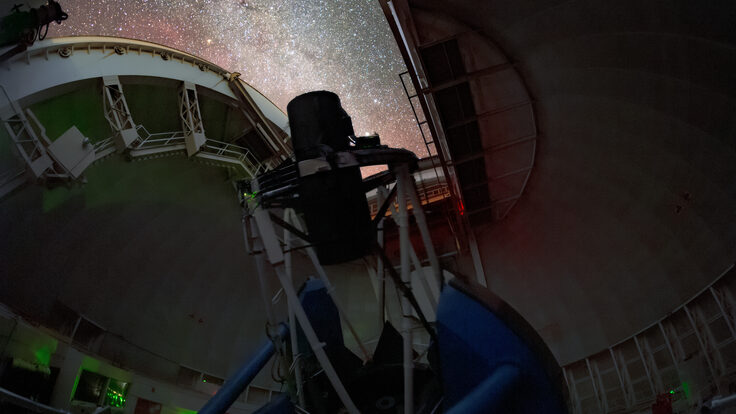 |
| P-378, 2002 acrylic on canvas 60 1/4 x 48 1/8 inches |
 |
| P-367, 2001–2003 acrylic on canvas 27 x 24 1/4 inches |
 |
|
(Click image for larger version) |
|
P-366, 2001 |
Gallery: Robert Straight
"Toroids and Plaids"
Numbers are the prime element
By Mike Perricone
Pick a number: 2, 3, 5, 7, 11, 13, 17, 19, 23, 29, 31, 37, 41, 43, 47, 53, 59, 61, 67, 71, 73, 79, 83, 89, 97, 101, 103, 107, 109, 113
and so on
and on
and on
and on
...
Get the picture? They did, in one way or another: Pythagoras, Eratosthenes, and Euclid, among the classical Greeks; Regius in the 16th century; Cataldi, Marsenne, and Fermat in the 17th century; Goldbach in the 18th century; Riemann, Landry, and Lucas in the 19th century; then computer after computer in the 20th and 21st centuries.
But Robert Straight gets the picture on prime numbers in a unique manner. A professor of painting at the University of Delaware, Straight had his work on display at the National Academy of Sciences in Washington, DC, through the end of September. In the exhibit, "Toroids and Plaids," Straight uses prime numbers to construct forms and establish color placement on the canvas. He superimposes grids onto toroids, or curved lines that never meet. The grids are stable; the toroids create a sense of movement; it's up to the observer to resolve the tension between stability and movement, and create an individual experience.
"Foremost, I hope that the paintings are visually compelling," Straight says. "I hope that my audience will also see that the paintings are not arbitrary abstractions, but that they are related to the universe and our world. These paintings have many concepts and visual layers. They are influenced by artists such as Mondrian and Karl Blossfeldt, as well as by constellations. For instance, the grids are also a screen that can be seen as a measuring device, as well as a decorative plaid. Each of the visual elements is related to several ideas and meanings, which include science, art, and our society."
With little formal exposure to mathematics or science, Straight has nonetheless adapted geometry as a basic element of his work. He has also integrated his growing interest in number sequences, along with what he describes as "the way computer technology has changed our world."
"I have made paintings in the past, which are not in this exhibit, which were polygonal canvases with equal sides of 5, 7, or 11," he continues. "The circle has been a major element in my work. I am drawn to absolutes in forms as well as sequences and for this reason I have used forms or sequences that are prime numbers. Almost all of the forms and shapes that I use in my work are constructed through simple geometry."
While describing the forms as "simple geometry," Straight acknowledges that the paintings in "Toroids and Plaids" represent specific challenges to his skill and craft–as well as expanding both.
"There are certain painting techniques that were a result of these paintings," he says. "The construction of the toroids required me to figure out ways of painting them without simply filling in the color. The grids are made by covering the paintings with color and then removing all but the lines with a squeegee. The way the paintings are executed, and the construction of the images, is all tied together in a fairly logical way which hopefully is not too easily detected."
Throughout the spectrum of their individual visions and techniques, all artists share one particular interest in numbers–the numbers of people viewing their work. Straight welcomes the chance to reach new eyes and minds.
"I'm really excited about this exhibit," he says, "because it's at an institution that not only attracts art enthusiasts, but also those interested in the sciences. It's wonderful that my work will be seen by a larger audience."
Click here to download the pdf version of this article.






